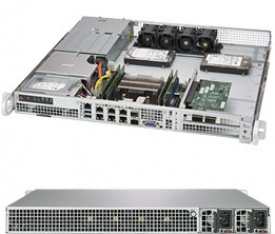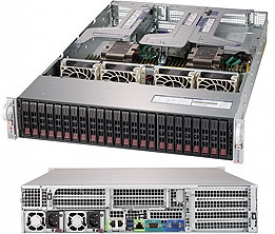What is liquid cooling (Liquid Cooling)?
| F.A.Q. • SupportWhat is liquid cooling (Liquid Cooling)?
As the name suggests, liquid cooling technology uses liquid (in this case, coolant) as the heat transfer mechanism. Two common liquid cooling technologies available on the market for servers are direct liquid cooling (DLC), also known as direct-on-chip (D2C) liquid cooling; and immersion cooling, which can be further divided into single-phase and two-phase immersion cooling.
- Direct liquid cooling helps the server dissipate heat by using sealed tubes (called cooling loops) filled with coolant. The cooling loops wrap around key components inside the server chassis. Heat energy is transferred from the components to the coolant through conductive copper plates, also known as cold plates. The heated coolant is then distributed outside the server to a heat exchanger, which removes heat from the coolant before directing it back into the server to repeat the cycle.
- Liquid and air cooling - the heat exchanger can be installed in the same server rack as the liquid-cooled server, allowing heat to be dissipated directly into the hot zone of the air-cooled data center. This configuration makes it easier for conventional data centers to use liquid cooling without having to overhaul the entire infrastructure.
- Liquid-liquid cooling transfers heated coolant from all server racks to a centralized heat exchanger that is part of the facility's liquid cooling loop. While this method is still more effective at dissipating heat, the server room will have to be designed from the start to support liquid-cooled servers..
Liquid cooling is more efficient at transferring heat than traditional air-cooled systems, so it is often used to cool servers that generate large amounts of heat, such as those that use high-performance computing (HPC) to support artificial intelligence (AI) development or the creation of digital twins. Compared to air cooling, which requires fans and heat sinks to help dissipate heat, liquid cooling does not apply to these components, and does not require additional space for airflow. All of this helps reduce the total server footprint, which can be used to significantly increase the density of the processor and graphics card, so more computing power can be deployed in a limited space. Efficient cooling can protect servers from exceeding their intended TDP, leading to greater reliability, higher availability and even better chip performance. Liquid cooling technology also reduces power consumption and improves the PUE (power usage effectiveness) of the data center.
Benefits
- Switching from air cooling (air conditioning) to more efficient liquid cooling reduces OPEX by more than 40%
- Liquid cooling efficiency dramatically improves data center PUE for high-performance, high-powered processors and GPUs
- Reduces costs and environmental impact
- Cooling capacity
- Water has 1000x more cooling capacity than air
- Thermal conductivity
- Water is 25x better at heat conduction
- Energy transport
- Water requires 10x less energy to dissipate heat
Why is liquid cooling becoming a necessity?
The cost of cooling data centers (Data Centers) continues to rise:
- Latest generation CPU:
- 400W
- Latest generation GPU:
- 700W
Summary
Types of liquid cooling systems
- Liquid to Liquid Cooling - Scalable for data centers, Direct to Chip (D2C) cooling
- Immersion Cooling - Excellent heat removal from entire systems. From 25kW to 200kW.
- Air to Liquid Cooling - Entire server racks - From 12kW to 75kW
Related pages:
- What is a server?
- What is a Data Center?
- Serwery Supermicro chłodzone cieczą (Supermicro Liquid Cooling Systems)
- Serwery Gigabyte chłodzone cieczą (Giga Computing Liquid Cooling Systems)
- GIGABYTE's Single-phase Immersion Cooling Technology: A Modern Solution for Data Centers




